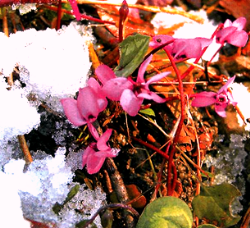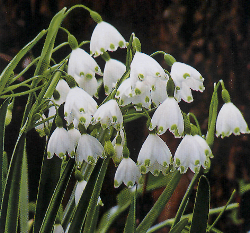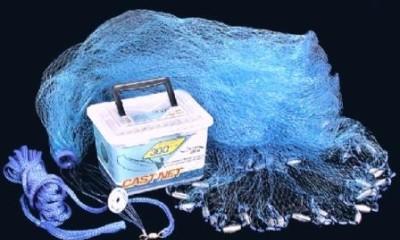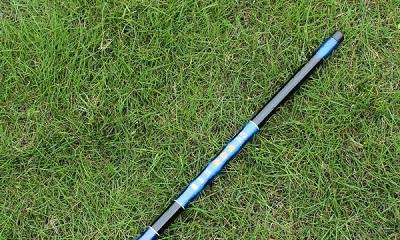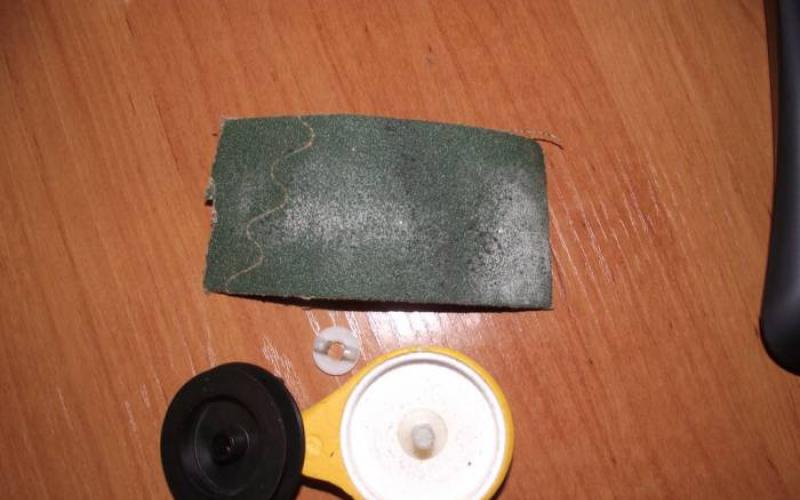Georgievskaya Tatiana
Download:
Preview:
Correspondence sightseeing tour
Work completed
4th grade student
Georgievskaya Tatiana
On the territory of the Krasnodar Territory, vegetation is distributed by zones. Latitudinal and vertical zonality is clearly expressed here. The steppe zone occupies the entire Azov-Kuban plain. In the recent past, it was a forb-fescue-feather grass steppe. At present, almost all of it has been plowed up and turned into boundless collective farm and peasant farm fields, where wheat, corn, sugar beet, sunflower , barley, vegetables and gourds. In total, there are more than 3 thousand plant species in the region.
Along the roads, along the slopes of the beams and on the tops of the mounds, you can find wild herbaceous plants: creeping wheatgrass, buttercup wild, yellow clover, wormwood, plantain, coltsfoot, quinoa , field sow thistle, St. John's wort, immortelle. In forest belts - oak, walnut, acacia and other tree species.
In the northeastern part of the region, on the Kuban-Azov lowland, steppe animals are common. Fields live here mice, gophers, moles, mole rats , hamsters. All of them harm agriculture. They live in burrows, feed on grain, leaves. From predators meet foxes, weasels, ferrets. From birds - larks, quail , gray partridges, crows, magpies . There are also predatory kites, owls, owls, steppe harrier.
In the Kuban delta, in floodplains and estuaries are common sedge, cattail, reeds, yellow water lilies , water lilies, water chestnut. Wild boars, foxes, waterfowl are found here: pelicans, gulls, ducks, lapwings, waders, geese, herons sometimes they fly swans . The muskrat lives in the estuaries. In the floodplains of the Kalininsky district there is the largest abounding colony of storks in the region.
On the right bank of the Kuban, not far from the village of Ivanovskaya, there is an array Red Forest (5200 ha). This is the remnant of the forests that used to border the shores of the Kuban to its lower reaches. Narrow strips of forest have been preserved in the middle reaches of the river. In the Red Forest grow oak, willow, maple, ash, apple, hawthorn, wild rose; deer, roe deer, wild boars, hares live.
Depending on the height above sea level and the associated changes in climatic, soil and other conditions, not only the general nature of vegetation, but also the appearance of plants changes dramatically.
As the relief increases, the steppe passes into the forest-steppe, and the latter into forest zone. The forest-steppe stretches in a relatively narrow strip on the left bank of the Kuban, covering the Zakuban sloping plain and the low (mainly up to 600 m) part of the foothills. About 50% of the area is shrubs and partly broad-leaved forests (oak, hornbeam, maple, hazel, dogwood).
The forests of the Kuban occupy 1.7 million hectares and are characterized by exceptionally valuable species. About 30% of oak forests, over 80% of beech and about 90% of chestnut plantations in Russia are concentrated in the region. The main part of the forests falls on the foothills, mountainous regions and the Black Sea coast.
Vegetation in the mountains forms three belts: forest, subalpine and alpine.
The forest zone is subdivided into two belts: deciduous and coniferous forests. Up to 700 meters above sea level, predominantly oak forests grow with an admixture of hornbeam, ash, elm, as well as fruit trees(pear, apple, dogwood). Oak forests give way to beech forests. At an altitude of 1200 meters, Caucasian fir joins them. From 1300 to 1800 meters, coniferous forests consisting of Caucasian fir and oriental spruce predominate. Fir needles are softer and slightly wider than spruce needles.
In the mountains and foothills there is an abundance of forest fruits and succulent meadow grasses. This creates favorable conditions for the habitat of animals and birds. Wild pigs graze in small herds in oak and beech forests. Unlike domestic pigs, wild pigs are somewhat shorter and taller on the legs. Old boars reach 100-150 kg of weight. They are covered with dense, coarse bristles of dark brown, and sometimes almost black color. The male has fangs.
IN wide deciduous forests go small, as tall as a domestic goat, roe deer, in their own way appearance deer-like. Only males have horns. The bear, wolf, jackal, raccoon dog, badger, fox, marten hunt. On the banks of the rivers - mink and otter. They dive and swim well, feed on fish and frogs.
Of the reptiles, there are: snakes - ordinary and water, vipers - steppe and Koznakov's viper (found high in the mountains), legless lizard spindle and yellow-bellied.
In the morning, the forest and valleys of the foothills are filled with the singing and chirping of various birds. Magpies chirp, whistle thrushes, cuckoos call, jays call to each other , hustle by the streams wagtails , shaking his tail; along the banks of the rivers, the melodic tune of the yellow-lemon oriole is heard, they quickly rush for prey falcons , healers of forests methodically tap on the bark of trunks - woodpeckers. Agile Shrikes hunt for insects. The nimble golden bee-eater chases bees, bumblebees, grabbing them on the fly with its long thin beak. Owls, eagle owls, starlings, grosbeaks, goldfinches, kingfishers, tits fly here, and high in the mountains - Caucasian black grouse, mountain turkeys - snowcocks.
On the steep banks of the rivers settleblue rollers, field sparrows and sand martins.
Birds are of great benefit to the national economy, destroying harmful insects and rodents. For example, one swallow catches more than a thousand plant pests per day. Hundreds of trees are saved by woodpeckers, eating beetle larvae hidden under the bark. An owl kills a thousand mice over the summer, and each mouse eats 1 kg of grain a year. It turns out that only one owl saves us a ton of bread a year.
Not all birds live with us all year round. Many live only in summer, hatch chicks, and fly away to warmer climes in autumn. There are about 320 species of birds in the Kuban.
Soil and air pollution led to a sharp reduction in the number of insectivorous birds: starlings, swallows, sparrows. But the number of crows and pigeons has increased. City dumps serve as an excellent food base for them.
At an altitude of 1800 - 2200 meters above sea level there is a belt of subalpine vegetation. Extendsubalpine meadowsand crooked forests with shrubby beech and mountain maple. Subalpine meadows are rich pastures. In the summer, cattle and flocks of sheep are kept here.
Above the subalpine meadows, starting from altitudes of 2300-2500 and up to 2800-3000 meters above sea level, there is a belt of alpine meadows of the North-Western Caucasus (in other parts of the Caucasus it is much higher). The harsh nature here. Only in August the glades are freed from snow.
What a striking change! In the subalpine zone, everything is large and magnificent, and in the alpine zone the same plants, but from 4 to 15 centimeters tall, creeping form. The brightness of the color, the diversity of flowers on rocky glades, surrounded by rocks and snow, is striking. Red grows all around mytniki, bright blue gentians , golden yellow buttercups and dandelions, rose red carnations, blue forget-me-nots.
From 3000 meters and above there are eternal snows and glaciers and impregnable rocks, almost devoid of any vegetation.
The vegetation of the Black Sea coast is diverse. From Anapa to Novorossiysk, the slopes of the mountains are covered with hornbeam and oak, hornbeam and hornbeam. On the spurs of the Markotkhsky ridge from Novorossiysk to Gelendzhik, twisted and undersized elm, hornbeam and among them dogwood and hawthorn . In the Gelendzhik region there are elm, maple, ash, dogwood, Walnut, cherry plum, apple tree, pear; along the coast - Pitsunda pine.
The resort village of Dzhankhot is located 12 kilometers south of Gelendzhik. Here, on the high coast of the sea, an island of ancient flora has been preserved - a grove of Pitsunda pine. It is surrounded by hornbeam, maple and other trees.
Behind the Mikhailovsky Pass, oak is distributed along the slopes of the mountains and rises to a height of 500 - 600 meters, then giving way to beech. Alder, viburnum, elder, dogwood, pear grow in floodplains and on the banks of rivers.
On the coast from Lazarevsky to Adler grow cypresses, Pitsunda pine, magnolias, palm trees . They remain green all year round.
Parks and squares are decorated with noble laurel, bamboo, yucca, various palm trees. There is no such month in the year that some plants do not bloom. Apricots, peaches and other fruits ripen in the orchards.
The fauna of the Black Sea is diverse, but concentrated mainly in the upper layer. Of the fish of commercial importance are: beluga, sturgeon, stellate sturgeon, herring , anchovy, sprats, bream, mullet, horse mackerel, mackerel, flounder. There are dolphins.
Fish live in the Sea of Azov: ram, shemaya , herring, sturgeon (beluga, sturgeon, stellate sturgeon), tyulka, horse mackerel.
Live in rivers and estuaries: bream, silver bream, asp, carp, catfish and other fish. The champion here is carp, it is found everywhere. He has a good appetite, so he grows quickly. In general, the carp grows throughout its life and sometimes reaches 1.5 meters in length, and its weight reaches 35 kg.
The most valuable fish are rybets and shemaya. Whiskers catfish live in a den under a snag, its main food is frogs. The catfish has strong jaws and teeth, like those of a shark, are bent back. You can't get out of this hole.
High in the mountain rivers there is another fish - trout.All she needs is clean water. And if you see this fish in a mountain river, you can safely drink water there, it is clean. Trout is a predator. It feeds on both worms and small fish, sometimes catching insects. Overcoming rapids, trout can jump out of the water by 1-1.5 meters.
The forests of the Black Sea coast preserve drinking and mineral water reserves, protect soils from water and wind erosion, landslides, rockfalls and landslides, and soften the climate. They provide a constant water level in the rivers, protect them from silting and shallowing, and thus create conditions for the reproduction of fish resources. From the slopes of the mountains, not protected by forest, the rains take down 100 cubic meters of land from one hectare per year. In such places, ravines quickly form.
The forest has a certain influence on the climate and the rivers that feed the fertile plains of the Kuban with their waters, protects water bodies from drying out, fields from drought, cleans the air from harmful carbon dioxide, dust and other tiny particles. The vegetation cover of the Earth is called the "lungs of the planet." One hectare of forest purifies 18 million cubic meters of air smoky and saturated with carbon dioxide per year.
The forest is a health factor and an excellent object for hiking, excursions, walks. The forest air is clean, it contains a lot of ozone and phytoncides - substances that inhibit the development of pathogenic microbes.
Wood is also a building material. The woodworking industry is developed in the Kuban. There are furniture factories and associations in Krasnodar, Armavir, Kropotkin, Apsheronsk, Novorossiysk. They make wardrobes, bookcases, chairs, tables, sofas…
The unreasonable predatory extermination of any kind of animals, birds, causes great harm to nature. Interspecies ties are destroyed, the natural balance is disturbed. Destroying the environment, people destroy themselves.
Our rivers, lakes and ponds are often polluted with sewage, especially waste water from factories and plants. Such water is harmful. The fish are dying in it. Therefore, it is necessary to protect animals, birds and fish from their unreasonable extermination.
In our region there are nature reserves and reserves. These are areas of the area where nature is preserved in its untouched form. It is forbidden to cut trees, hunt birds and animals in the reserve.
Schoolchildren should remember the words of the writer M.M. Prishvin, who wrote: “We are the masters of our nature, and for us it is the pantry of the sun with the great treasures of life. Not only that, in order to protect these treasures, they must be opened and shown.
Fish need clean water - we will protect our reservoirs. There are various valuable animals in the forests, steppes, mountains - we will protect our forests, steppes, mountains. Fish - water, bird - air, beast - forest, steppe, mountains. And a man needs a homeland. And to protect nature means to protect the Motherland!
Literature:
- Grin L. Nature of the native land.-Krasnodar, 2005.
- Lotyshev I.P. Traveling around the native land. - Krasnodar, 1999.
- Paskevich N. Ya. Favorite corner of the earth. - Kranodar, 2005.
- Red Book of Kuban.
- Internet resources.
All the plants below that grow in the Kuban are listed in the Red Book and all of them are protected plants of the Krasnodar Territory.
So this is:
Herbaceous perennial up to 20 cm tall. Leaves 2, directed upwards, obtuse, covered with a waxy coating. The stem is cylindrical, one flower. Flowering period February-April. Decorative, honey plant, poisonous.
Grows in the Caucasus, in the mountains, on the edges, in thickets of shrubs, deciduous forests. Disappears due to the collection of flowers in bouquets, unregulated cattle walking.
Herbaceous perennial. The flowers are red-violet, rarely pink or almost white. Blooms in February-March. Fruits in May-June. Propagated by seeds. Decorative, medicinal. The number is rapidly declining due to mass destruction for winter and early spring bouquets, digging of tubers for medicinal purposes.
Near the Krasnodar-Dzhubga highway is the Psekupskoye tract, where a real miracle of nature grows - summer white flower - a Mediterranean species listed in the Red Book of Russia. This place has no analogues in the Western Caucasus in terms of density, abundance of white flowers. A beautiful spring flower is actively collected by local residents and sold in the markets. It is widely used in the pharmaceutical industry, which in itself harms a rare population.
Website materials used: festival.1september.ru
It existed on the planet long before the appearance of man. And over millions of years, they have had many wonderful opportunities to adapt to certain conditions as much as possible. environment. The poisonousness of individual representatives of this kingdom is also one of the options for ensuring optimal existence. After all, such plants and animals will not eat, and a person will not touch it once again. To date, there are more than 10 thousand such representatives of the flora, capable of producing and accumulating poisons in themselves.
There are also a huge number of them in Russia. Walking through the meadows and forest edges, people do not even suspect that there are a lot of things around them. dangerous plants. Some of them are very poisonous and can cause irreparable damage to our health - both physical and mental. Some of these representatives of the flora can even be touched, smelled, plucked without any harm to themselves. However, plants are very dangerous. And it's not worth tasting them.
The books are worthy of their own. Including representatives of the flora in the Krasnodar Territory. Around us, there are much more types of plants that are poisonous to one degree or another than we can imagine, since familiar flowers, trees, herbs, and shrubs can also be hostile. They can be even more dangerous for children, because the child's body is less stable and more susceptible to toxins.
It is important to know at least the most common poisonous plants Krasnodar Territory. This will help protect yourself from the most dangerous chemical burns or poisoning, which can be the result of an innocent enjoyment of such a seemingly harmless flower or a beautiful herbarium herb. How dangerous are poisonous plants in the Krasnodar Territory? Photos and descriptions of them are presented in this article.
Caucasian ash tree
For its amazing ability not to burn, the ash tree is also called the burning bush, the fire flower, and also the wild star anise. This small plant about 50 cm high with dark green ash-like leaves and large white or purple flowers is the most dangerous in the flora of the Krasnodar Territory. True, the ash tree is harmful only during its flowering, in May-June. In addition, he looks very attractive and harmless. However, its flowers can cause deep chemical burns, rashes, and inflammation. Moreover, due to the increased content of essential oils, it affects the human body even at a distance. 
hogweed
There are at least 60 species of this biennial plant, and some can be eaten by both animals and humans. The real danger is fraught only with Sosnovsky's hogweed. Its leaves and fruits contain essential oils, capable of causing burns with blisters, the strongest allergic reactions in humans. Other names of poisonous plants from this family: angelica, borzhovka, bursha. Depending on the species, the height can vary from 0.2 m to 2.5 m, the leaves are very large, the flowers are small, collected in the form of an umbrella (white, hot pink, greenish yellow).
Aconite
Such perennial poisonous plants of the Krasnodar Territory also include at least 60 species. But unlike hogweed, they are all dangerous. These are two-meter plants with a powerful rhizome and irregularly shaped flowers. They come in white, blue, yellow or purple. Aconite also has other names: wrestler, wolf slayer, wolf root, backache-grass, black potion and others. If you believe ancient Greek myths from the cycle of the exploits of Hercules, this plant grew in the place where poisonous saliva dripped from the mouth of Cerberus, near the city of Akoni. Hence the name. It should be borne in mind that all parts of the plant are dangerous, especially the roots. And if help is not provided to the injured person in a timely manner, the outcome, unfortunately, will be fatal. 
Belladonna
One of their names (Bella Beauty) is perennial received for the fact that the ancient Romans and Italians used belladonna juice to give their cheeks a charming blush, and their eyes a special shine. Yes, and today in medicine (it's crazy cherries, dog cherries - all these are the names of poisonous plants) is part of various medicines. The leaves of the belladonna are ovoid, the berries are black and purple, they look like cherries. However, it is the poisonous fruits that are considered the most dangerous, although the entire plant with the root system, inclusive, is harmful, causing various hallucinations, bouts of unreasonable laughter and excessive activity. 
black elderberry
For the Krasnodar Territory, this unpretentious poisonous shrub is not uncommon. You can meet him almost everywhere both in the fields and in the forests. The height of the elderberry can reach an average of 6 meters, the leaves are large, the flowers are yellowish-white, but the fruits are black-purple. It is they, especially unripe ones, that are the most dangerous, because they have a neurotoxic effect.
Henbane black
Such poisonous plants of Krasnodar are among the most common and can be found almost anywhere. Henbane is a fairly tall plant (up to one and a half meters) with thick gray-green leaves and fruits in the form of a box with dark brown seeds resembling poppies. The flowers are henbane yellow, with purple veins. The effect of eating this plant is high fever, dry mouth, agitation, delirium, increased activity. 
Datura
Another dangerous representative of the Solanaceae family is Datura ordinary (stinky), an annual plant up to 1.5 meters high with dark green serrated ovoid leaves and large white leaves. In addition, Datura also has fruits in the form of a box covered with thorns and containing black seeds. . Symptoms of poisoning are similar to henbane. These poisonous plants of the Krasnodar Territory are also very common, they have long "settled" next to a person, even within the city.
Lily of the valley
Many consider this graceful and familiar plant to our eyes to be absolutely harmless. However, it is not. Moreover, red-orange lily of the valley berries are of particular danger, the use of which leads to severe poisoning, accompanied by headache, cold sweat, and sometimes convulsions. 
Ambrosia
This plant became especially widespread in Lately. A serious danger for allergy sufferers, it causes severe attacks of hay fever and migraine. This is a one- or perennial grass about 2 meters high with a powerful root system and large leaves. Flowers five-toothed, yellow or greenish.
foxglove purple
These biennial poisonous plants of the Krasnodar Territory attract attention, first of all, with a very remarkable and bright appearance, large flowers. But all parts of the foxglove are poisonous, causing severe vomiting, convulsions, weakness, delirium, circulatory arrest and even falling into a coma. Therefore, medical assistance to the affected people is necessary and urgent.
It is extremely important to understand which plant is poisonous and which is completely safe. So, we are all familiar with celandine, the juice of which for many generations covered the "combat" cuts of childhood, but when it is eaten, you can get severe poisoning with convulsions and depression of the central nervous system. 
The roots and bark of acacia, which have been ingested through negligence, can cause cardiovascular insufficiency and severe mental disorders. Moreover, such symptoms are manifested not only in the elderly, but also in young, absolutely healthy people. Yes, and the common poppy, in particular opium varieties, is fatal. It causes severe poisoning, similar in its symptoms to lesions from black henbane.
Therefore, it is so important to be careful and not to touch once again even well-known plants. Moreover, you should not taste them. Warn the younger generation against such experiments. Of course, the description of poisonous plants can be continued for a long time. However, no matter how hard you try, you still can't remember everyone. But the most common poisonous plants in the Krasnodar Territory (some of the photos can be seen in the article) need to be known.
In the Krasnodar Territory there are quite a lot of beautiful and amazing plants. For example, Pitsunda pine - it grows in Gelendzhik and along the coast. Can survive in adverse conditions. Her cones do not fall off and can hang open for more than three years. At the age of thirty, her height is fifteen meters, and at a hundred years she grows up to forty meters in height. Her needles are up to sixteen centimeters long, when other pines have only eight. Even the cones of this pine are red.
 On the Black Sea coast, starting from Mount Lysa near Anapa and up to Gelendzhik, pistachio grows with the interesting name tupolistnaya. The pistachio genus is very ancient. This is a small ornamental plant, it ripens in late summer, early autumn. The plant tolerates drought well and loves light very much. It grows slowly, in twenty years it grows by one meter. Pistachio contains 75% resin and up to 25% essential oils. A tree needs resin to heal cuts faster, and a person uses it to process wooden utensils, and constant chewing of pistachio resin cleans and strengthens tooth enamel. Its resins are also part of various ointments, with the help of which rheumatism, ulcers and wounds, burns and cracks in the skin are cured. Some modern pharmacists themselves brew ointments from this resin according to old recipes. And the wood of the pistachio tree is very hard. Previously, it was intensively cut down for shipbuilding, and smoking pipes and other similar things were also made from its roots.
On the Black Sea coast, starting from Mount Lysa near Anapa and up to Gelendzhik, pistachio grows with the interesting name tupolistnaya. The pistachio genus is very ancient. This is a small ornamental plant, it ripens in late summer, early autumn. The plant tolerates drought well and loves light very much. It grows slowly, in twenty years it grows by one meter. Pistachio contains 75% resin and up to 25% essential oils. A tree needs resin to heal cuts faster, and a person uses it to process wooden utensils, and constant chewing of pistachio resin cleans and strengthens tooth enamel. Its resins are also part of various ointments, with the help of which rheumatism, ulcers and wounds, burns and cracks in the skin are cured. Some modern pharmacists themselves brew ointments from this resin according to old recipes. And the wood of the pistachio tree is very hard. Previously, it was intensively cut down for shipbuilding, and smoking pipes and other similar things were also made from its roots.
 A lot of juniper grows in the Krasnodar Territory. Juniper belongs to the oldest genus of cypress. He appeared on Earth fifty million years ago, and yet he still lives. There are about seventy species of this plant, and twenty-one species grow in Russia, five in the Crimea. Its types are very diverse - tall, prickly, red Cossack, smelly and hemispherical.
A lot of juniper grows in the Krasnodar Territory. Juniper belongs to the oldest genus of cypress. He appeared on Earth fifty million years ago, and yet he still lives. There are about seventy species of this plant, and twenty-one species grow in Russia, five in the Crimea. Its types are very diverse - tall, prickly, red Cossack, smelly and hemispherical.
The first type of juniper is tall. A tree up to fifteen meters in height, with a dense crown, its branches are rather thin and raised upwards.  Its bark has dark color, cone - berries are spherical, about one centimeter in size, and they have a rather pleasant dark purple color. This type of juniper grows relatively quickly from three to five years, loves light and heat, and may not dry out for a long time. Can live up to fifty years.
Its bark has dark color, cone - berries are spherical, about one centimeter in size, and they have a rather pleasant dark purple color. This type of juniper grows relatively quickly from three to five years, loves light and heat, and may not dry out for a long time. Can live up to fifty years.
Juniper red - it used to be called red cedar. Basically, it grows as a six to eight meter tree with lush branches covered with prickly needles, and for this it was given another name - prickly juniper.
 And juniper smelly is also called foul-smelling. It is very similar to high juniper, but its berries are twice as large and not dark, but brown. The smell of this plant is quite unpleasant. Juniper is often used for medicinal purposes. For this, ripe fruits are used, which are harvested in late autumn. If they are dried, then such fruits can be stored for up to three years. Juniper contains essential oils, as well as up to 40% sugar and acid. Ointments and medicines are never made from Cossack juniper, it is poisonous, it can be distinguished from other juniper by its bumpy surface, smell and dark blue tint.
And juniper smelly is also called foul-smelling. It is very similar to high juniper, but its berries are twice as large and not dark, but brown. The smell of this plant is quite unpleasant. Juniper is often used for medicinal purposes. For this, ripe fruits are used, which are harvested in late autumn. If they are dried, then such fruits can be stored for up to three years. Juniper contains essential oils, as well as up to 40% sugar and acid. Ointments and medicines are never made from Cossack juniper, it is poisonous, it can be distinguished from other juniper by its bumpy surface, smell and dark blue tint.
 Also, of all the forests of the Krasnodar Territory, boxwood is the most beautiful and mysterious. He amazes all the tourists extraordinary beauty. In the thick leaves of boxwood, twilight always reigns, and light and at the same time fluffy moss hangs from its branches in interesting strands. Just like in a fairy tale!
Also, of all the forests of the Krasnodar Territory, boxwood is the most beautiful and mysterious. He amazes all the tourists extraordinary beauty. In the thick leaves of boxwood, twilight always reigns, and light and at the same time fluffy moss hangs from its branches in interesting strands. Just like in a fairy tale!
Boxwood - green Tree with small leaves on the branches. This tree can live for more than fifty years. It will grow to a height of twenty meters, and a width of about fifty centimeters. The tree grows too slowly - about one millimeter per year, so its wood is too dense and rather heavy and easily sinks in water.  It blooms with small flowers, which have a very pleasant intoxicating smell. Boxwood is shade-tolerant, but it also needs moisture. Moss on the branches of boxwood preserves it. This plant blooms in late winter and early spring, and ripens in mid-autumn. Boxwood is very poisonous. Since its wood is very hard and valuable, this plant species is listed in the Red Book, it is currently on the verge of extinction, so it is absolutely impossible to cut it down.
It blooms with small flowers, which have a very pleasant intoxicating smell. Boxwood is shade-tolerant, but it also needs moisture. Moss on the branches of boxwood preserves it. This plant blooms in late winter and early spring, and ripens in mid-autumn. Boxwood is very poisonous. Since its wood is very hard and valuable, this plant species is listed in the Red Book, it is currently on the verge of extinction, so it is absolutely impossible to cut it down.
 A rather rare type of grape grows in the Krasnodar forests - wild. Its leaves are round, almost kidney-shaped, the antennae are branching and grow in a spiral so that neighboring plants curl. The grapes bloom in early May and ripen in late autumn. The corolla is dropped in the form of a cap before flowering. The berries of forest grapes have a very sour taste. This species is easily able to survive in adverse conditions. It is also used as a medicine - they are treated with foot fungus. There are very few wild forest grapes left, it has also been added to the list of endangered plant species.
A rather rare type of grape grows in the Krasnodar forests - wild. Its leaves are round, almost kidney-shaped, the antennae are branching and grow in a spiral so that neighboring plants curl. The grapes bloom in early May and ripen in late autumn. The corolla is dropped in the form of a cap before flowering. The berries of forest grapes have a very sour taste. This species is easily able to survive in adverse conditions. It is also used as a medicine - they are treated with foot fungus. There are very few wild forest grapes left, it has also been added to the list of endangered plant species.
The Red Book of the Krasnodar Territory includes a list of plants that need to be protected and monitored by government organizations. The methods that are being adopted to conserve these species are detailed here.
Adonis spring (Adonis) - a plant listed in the Red Book of the Krasnodar Territory. It has a bright yellow color. I add its fruits to various medications. Helps to cope with heart ailments, neurological problems and kidney diseases.
Hellebore Caucasian - medicinal plant, which is listed in the register of endangered plants. Behind increased content poison, opponents of the use of decoctions and tinctures have recently appeared. But the correct dosage will give good results in recovery.
Marsh cinquefoil is a medicinal plant that is actively used in traditional medicine. It is effective in diseases of the musculoskeletal system, women's diseases, heart disease. It has anti-inflammatory, hemostatic, wound-healing effect.
Caucasian cyclamen - beautiful plant, which is actively used in folk medicine. It is listed in the Red Book of the Krasnodar Territory and is carefully guarded by government agencies. If the dosage is observed, it can have a positive effect on the digestive system, restore strength after colds.
The coast of the Krasnodar Territory is a unique place where a developed infrastructure is combined with a wide variety of flora and fauna. Some plant species are included in the Red Book of the Krasnodar Territory and are carefully protected by government agencies. Despite the financial situation of the country, active work is being carried out aimed at the conservation of rare species. The combination of the alternation of the landscape surface of the earth with the subtropical climate form a diverse plant fund.
Red Book of the Krasnodar Territory
The Krasnodar Territory is a territory rich in plants. In total, there are more than 3,000 species of flora. The average annual temperature is quite high, its indicators range from 10.8 to 11 degrees. This influenced the active growth of the green cover of the area.
In 2007, it was decided to create the Red Book of the Krasnodar Territory, which will include rare and endangered species of flora and fauna. The initiators were locals who understood that the pristine beauty of the Kuban should not only be preserved, but should be increased. Over the past decades, some representatives of flora and fauna have irretrievably disappeared, which were natives of the area and do not live in other territories. Unfortunately, it is not possible to return them.
The characteristics of plants found on the territory of the Krasnodar Territory are described in the second volume of the Red Book, which is called "Plants and Fungi". All information on biology, morphology, possible threats to flora and methods of its protection and reproduction is located here. 386 species are recognized as endangered plants.


